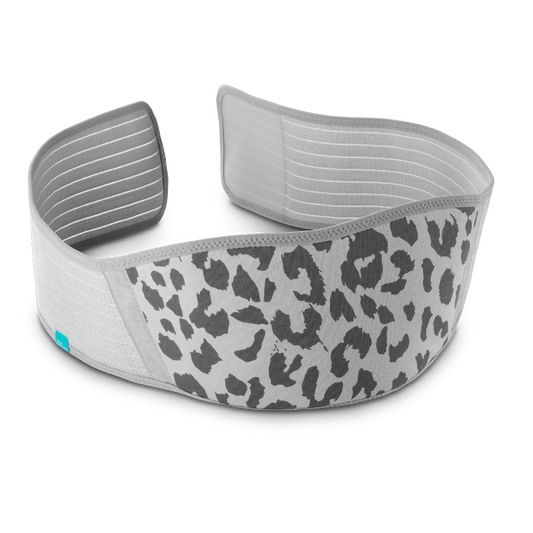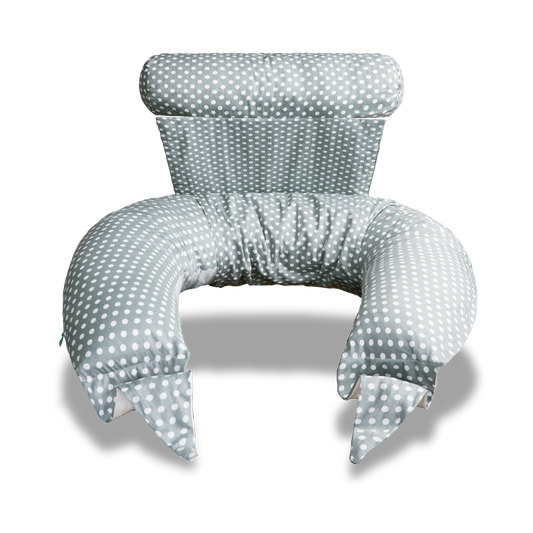Stretch marks are blemishes which commonly appear on the skin during pregnancy and are often feared by most mums-to-be. They typically develop on the belly, hips, and breasts, as these areas are those most prone to change.
This is one of those classic situations where the proverb "prevention is better than cure" applies. Don't just wait for pregnancy stretch marks to appear, start looking after your skin as soon as you find out you're pregnant. How? By following our advice below, which you can apply both before and after the birth!
Everything you need to know about stretch marks during pregnancy
Stretch marks, known as striae distensae in medical terms, are basically streaks which form on the skin when the skin is stretched beyond its limit, causing elastic fibres to break, and also when there is a reduction in thickness of the skin. They usually appear as single or multiple lines and start off as reddish in colour, gradually fading over time and eventually turning paler than the skin’s natural shade.
These marks often appear during puberty or after significant weight loss. However, those dreaded stretch marks often occur also during pregnancy on the belly, hip, and breast areas of mums-to-be. Stretch marks aren’t technically considered a medical disorder, however, given that pregnancy is a complex period in itself, full of changes -physical, hormonal, and emotional - even the slightest of blemishes has the power to make us feel a little low as well as concerned.
Stretch marks during pregnancy: when and why they appear
According to a report produced by the Ministry of Health, stretch marks affect more than 50% of pregnant women. They tend to develop in the third trimester (between6th and 8th month) and are linked to a genetic predisposition. However, more often than not, they are also linked to physical changes – as both the belly and breasts increase in volume during this period – as well as hormonal factors.
During this time, there is a higher concentration of steroid hormones (such as cortisol) present in the blood, which weaken elastic fibres of the dermis (the deepest layer of the skin). As the mum-to-be gains weight and as her baby bump grows, her skin becomes overstretched, resulting in the appearance of pregnancy stretch marks.
The main issue with stretch marks, be that if they develop before or after the birth, once present, they never disappear altogether, although, they can be made less noticeable. That's why prevention is crucial - our tips and advice will help you prevent these pesky scars.
How to prevent stretch marks during pregnancy
There is no magic way of preventing stretch marks during pregnancy. The best thing you can do is to try to take preventative action covering all fronts – both by looking after your skin and making changes to your lifestyle – in an attempt to stop them from forming in the first place, or, if they do form, to ensure they are as faint as possible.
Here's how you can help avoid stretch marks from forming:
- Massage areas at risk (belly, hip, and breast areas) every day, using a circular motion, with organic almond oil or a specific pregnancy stretch mark cream, to keep your skin elastic and well-nourished.
- Eat a balanced diet, rich in proteins, vitamins - especially A and C - and antioxidants, and remember to drink plenty of water (this will also help to combat heartburn).
- Try to limit weight gain, through a healthy diet and light physical activity, such as walking or water aerobics, to avoid further stretching of the skin.
- Do not smoke, as it is dangerous to both your and your unborn baby’s health and also reduces skin elasticity, making it more prone to stretch marks during pregnancy.
- Wear soft, comfortable clothes to facilitate circulation and promote regeneration of skin cells.
- Do not have a bath or shower with water that is too hot, as this can dehydrate the skin.
Last but not least, it’s important that you don’t let stretch marks stress you out too much throughout your pregnancy. Keeping calm and feeling comfortable with your own body can positively impact both your and your baby’s well-being.
Stretch marks after childbirth: how to combat them?
What can you do about stretch marks which appear after giving birth? It’s hard to predict how the birth will affect stretchmarks: unfortunately, in some cases they remain clearly visible on the skin, while in other cases, they gradually become thinner though they can still be felt on the skin by touch. Their colour can also vary. Stretch marks are usually reddish in colour during pregnancy - while the skin is still inflamed - and fade to a white or a paler shade after the birth - when the actual scar has formed.
At this point, when prevention is no longer an option, certain remedies can be used to alleviate the problem:
- Continue to massage the areas affected on a daily basis, using products specifically for stretch marks during pregnancy (such as those in our Skincare range).
- You can also try mud treatments, which are specifically designed for skin blemishes.
- Various dermatological therapies: such as acid-based chemical peelings which encourage collagen production, as well as radiofrequency which stimulates skin renewal.
- Laser can also help combat stretch marks following childbirth, especially helpful in evening out skin colour and making scars less visible.
- Finally, two cutting-edge methods are carboxytherapy, which improves oxygenation and cell regeneration, and transdermal drug delivery. Ask your dermatologist for more information!
As we said before, it truly all comes down to your attitude towards 'stretch marks both during and post pregnancy’. We now know that they are a common occurrence during pregnancy, and they may impact a little on your body-image, but we also have to understand that they are just one of the small nuisances pregnancy can bring, just like pregnancy hair loss or swollen hands and feet. As common as these issues are, we can ensure we take the right preventative measures to avoid them happening in the first place or, at least, minimise their effects as much as possible when they do appear.
It’s important not to let a blemish steal the joy that pregnancy brings. We can assure you that, as soon as you hold your newborn baby in your arms, everything else will be forgotten in a flash!










